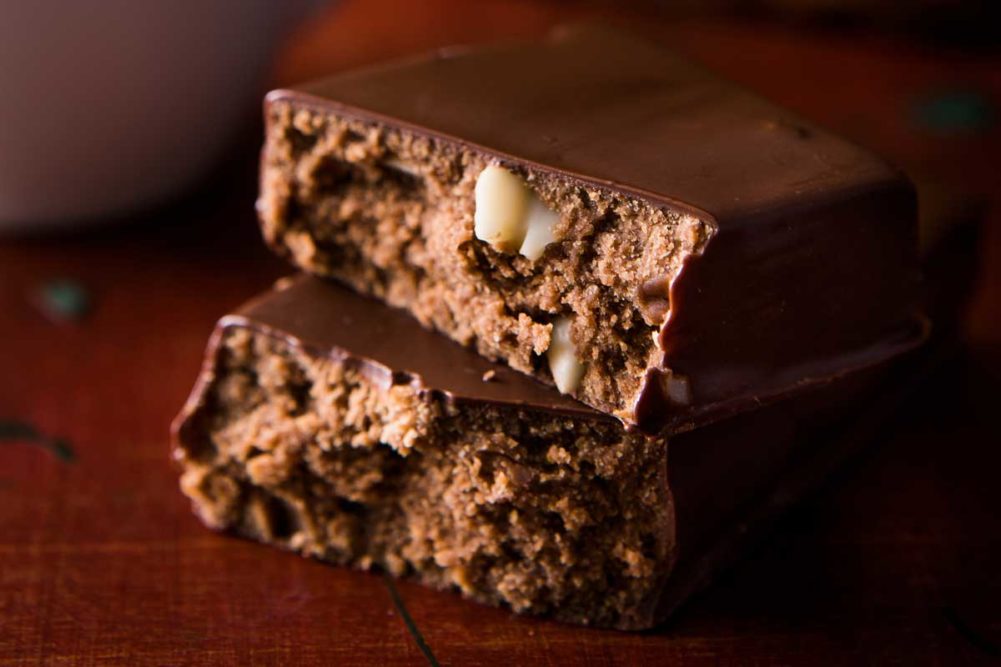A variety of proteins can be added to baked goods in different formats to provide texture and nutrition.
Agropur developed whey protein-based inclusions that can be used in baked products. Not only do they deliver extra protein, but the inclusions also contain no added sugar.
“They add a light and airy texture to baked products,” said Anand Rao, vice president of ingredients innovation, Agropur Ingredients.
Glanbia Nutritionals manufacturers milk protein-based crisp inclusions designed to deliver a hearty crunch, as well as quality dairy protein to nutritional bars. The crisps are designed to withstand the bar-making process as well as keep their integrity throughout the bar’s targeted shelf life.
“The milk protein concentrate in the inclusions is extremely functional in that it withstands an extrusion process and provides a clean dairy flavor requiring no masking,” said Ashley Bacchiarello, director, product strategic management, Glanbia Nutritionals.
While dairy provides extra protein to baked goods, other ingredients can also be used to make fabricated inclusions that boost protein content.
DuPont Nutrition & Biosciences offers soy- and pea protein-based nuggets and flakes in a range of protein contents, textures, colors, shapes and sizes. The inclusions can be applied in dough, batter and nutrition bars. If used in a higher moisture system, the nuggets soften over time, so the crunch may get lost through shelf life.
“The most unique nugget family is our 90% protein soy nuggets and 82% cocoa soy protein nuggets, which offer the highest protein content in the industry,” said David Guilfoyle, group manager, bakery, fats and oils, DuPont.
[Related reading: Before adding fruits, nuts to baked foods, take note of processing challenges]
In 2019, Balchem acquired Zumbro River Brands and now offers the company’s signature crisps, which are made from multiple protein sources and flavor combinations. Popular proteins are brown rice, pea protein and whey, alone or in combinations.
Cargill Cocoa and Chocolate offers protein-fortified compounds as inclusions as well as coatings.
“Compound coatings mimic chocolate from a sensory perspective but aren’t required to meet the standard of identity, making them the perfect carrier of functional ingredients such as protein and fiber,” said Katy Cole, technical service manager at Cargill. “There are a variety of technical factors to consider when formulating compounds with added protein or fiber, including flavor and texture. Consumers have specific sensory expectations when it comes to their chocolatey treats, so it’s important not to overlook these factors.”
Kerry’s better-for-you inclusions include reduced- and no-sugar-added chocolates, yogurt bits and nut with fruit chunks. These can also be designed to deliver fiber or protein fortification.
“It’s hard to predict the future of nutritional inclusions in the baked goods sector, but we believe that as consumers pay more attention to ingredients in the foods they eat, we will see increased demand for ‘real’ ingredients,” said Yanling Yin, director-bakery applications, Corbion. “While consumers see these as valuable nutritional additions, these types of inclusions also attract and delight consumers by offering them fresh, enticing flavors in new combinations.”
This article is an excerpt from the August 2020 issue of Baking & Snack. To read the entire feature, click here.






